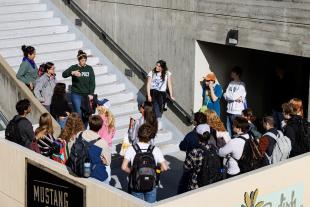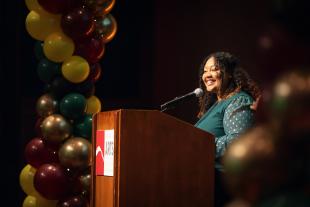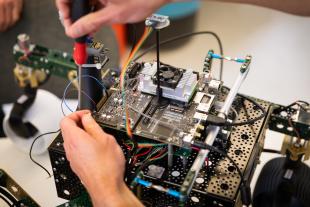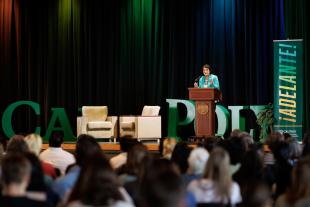‘The Flame That Guides All of Us.’ Native American and Indigenous Cultural Center Opens
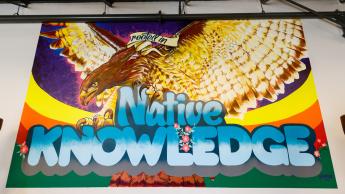
The Cal Poly community celebrated the new Native American and Indigenous Cultural Center (NAICC) during a campus gathering on Oct. 14. The center aims to provide more support for the Native and Indigenous communities on and off campus through mentorship programs, academic support, and art, dance and crafting activities specific to Native American and Indigenous cultures.
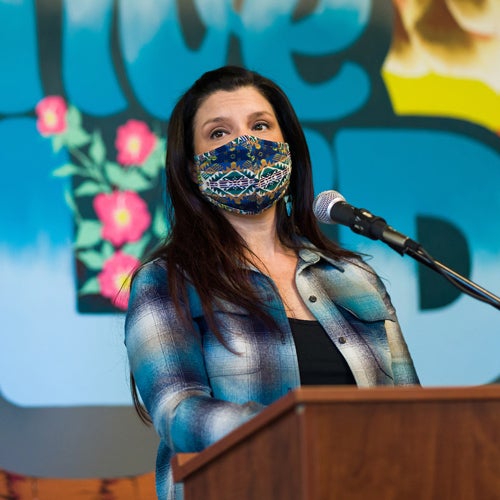
“This space is a love letter to all Native and Indigenous students," said Professor Jenell Navarro, chair of the Ethnic Studies Department, president of the American Indian and Indigenous Faculty and Staff Association, and longtime advocate for the center's creation. “We do indeed love you. We are here to help you realize your full potential, and we’re your biggest champions.”
The celebration welcomed dozens of students, employees and community members to see the intertribal gathering space, nestled within the yakʔitʸutʸu residence halls, explore an educational exhibit and hear from campus leaders. The event followed a small grand opening ceremony on Indigenous Peoples' Day Oct. 11 with yak titʸu titʸu yak tiłhini Northern Chumash Tribal Members.
“We’re so honored to work, study, and live in these beautiful and unceded yak titʸu titʸu yak tiłhini Northern Chumash homelands,” Navarro said, noting that the Indigenous community has more than 10,000 years of documented history on the Central Coast.
One of the centerpieces of the space is a mural featuring a red-tailed hawk, symbolizing the hope for reciprocal relationships with the natural world, soaring through a skyscape of brilliant colors representing the sun, land, air and water. Points of starlight above the hawk also represent the presence of ancestors who continue to guide the next generations.
The mural, titled, “Rooted in Native Knowledge," was created using acrylic and aerosol by Indigenous artist and cultural organizer Joel Garcia (Huichol). Navarro worked with Garcia, Kennedy Library’s creative works team, student groups, University Housing and other campus partners to commission the work.
Artist Joel Garcia talks about the symbolism behind the mural, and Cal Poly students reflect on what it means to watch the artwork come to life. Don’t see the video above? Watch it on YouTube.
Professor Denise Isom, interim vice president for diversity and inclusion, took the mural’s message to heart as she addressed the crowd, lamenting all that’s lost in the erasure of Native culture. The university’s larger aspirations to excellence aren’t possible without the knowledge, wisdom and stories of Native and Indigenous communities near and far, she said.
“If we wish to continue to move forward technologically, agriculturally, in sustainability and understanding our environment and our world, we need Native knowledge,” she said. “I love that there is this declarative space to speak against the invisibility — it must only be one step in a series that we make to continue to change the conversation on this campus and beyond.”
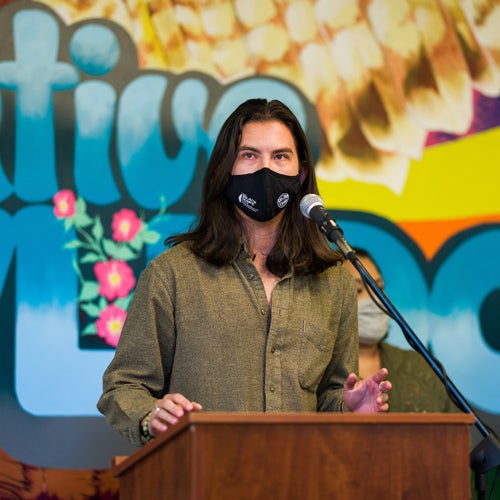
Wyatt Kohler, a member of the Sac and Fox Nation of Oklahoma who studies electrical engineering, said the center proves wrong the ideas that Native and Indigenous people should be “swept under the rug” and forced to assimilate.
“[The center] feels like it will be the flame that guides all of us,” he said, “and hopefully it will bring in more Native students who won’t have to spend time wondering where everybody is because we’re right here — we’re always here.”
The center is one of several created under Student Diversity and Belonging, a collective of resources and spaces on campus that support students experiencing marginalization.
Core to the center are its partnerships with Cal Poly’s American Indian Student Association, American Indian Science and Engineering Society, the American Indian and Indigenous Faculty and Staff Association, University Housing and Academic Affairs, as well as the yak titʸu titʸu yak tiłhini Northern Chumash Tribe and other local and statewide tribes. The resources students can find are rooted in decolonial practices, restorative healing, Native knowledge and community engagement.
Beya Makekau, director of Student Diversity and Belonging, said student clubs, employee organizations and local Indigenous communities regularly provide grassroots support for themselves. She believes the center’s explicit investment in Native and Indigenous students can help them “feel holistically celebrated, supported and seen on this campus.”
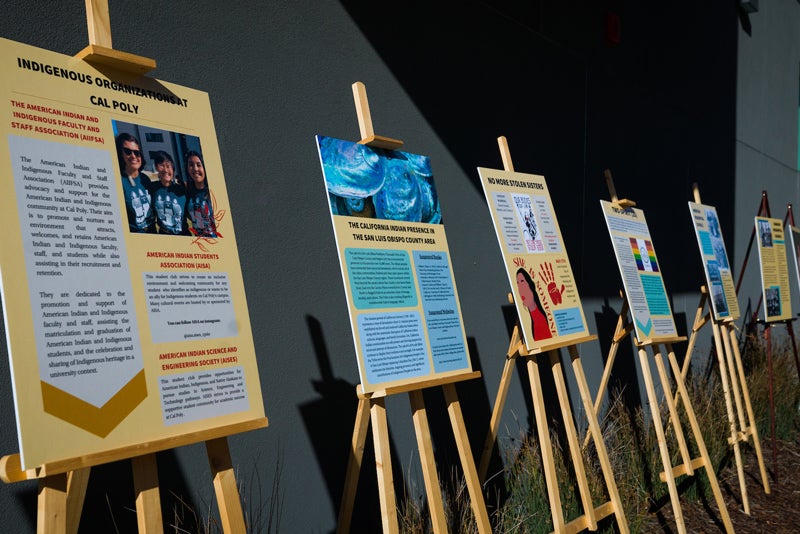
Looking ahead, the NAICC plans to host Native and Indigenous Heritage Month programs in November in addition to an ongoing speaker series, dialogues and book circles, art and dance presentations, a film series and a commencement ceremony.
Makekau says students who identify as Native and Indigenous are among the smallest groups on campus, but that doesn’t mean there should be fewer resources for them.
“In fact, I think it means that we have to invest more in how we serve that population,” Makekau said, “and I think it also plays a big role in how we connect to our larger institutional goals of creating pipelines for Indigenous students to Cal Poly.”
She hopes students, especially those considering attending Cal Poly, see this new center full of art and community-building programs as a signal that, not only do they belong at the university, but a community is ready to help them thrive.
For more information, visit culture.calpoly.edu/native.
Don't want to miss any cool Cal Poly News stories? Sign up for our monthly newsletter, the Cal Poly News Recap!

